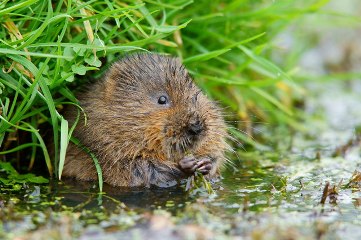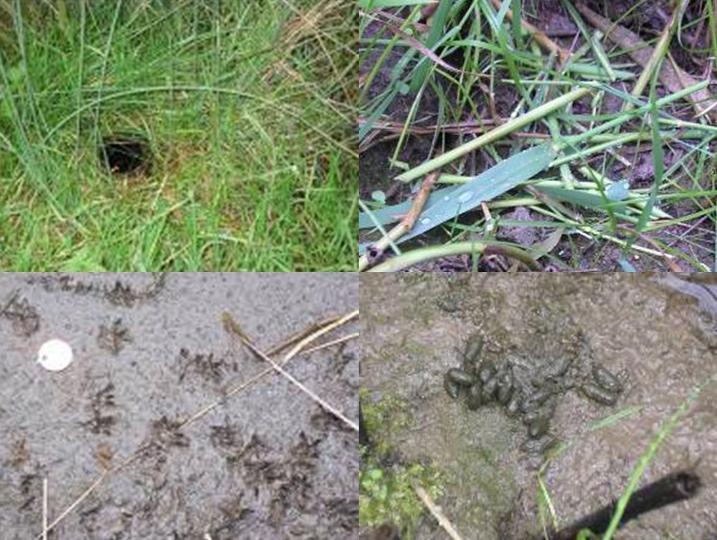Biodiversity
Related Links
Latest News
A Starring Role for Nantclwyd’s Lesser Horseshoe Bats
22.05.2015
Living Landscape Brought Back to Life
05.12.2014
More Information
Take a look at our project pages to find out more about what’s being done to conserve the water vole in Denbighshire.
Facebook Page
Water vole
The water vole has the unfortunate accolade of being the fastest-declining mammal in Britain, with 90% of the UK population lost since the 1980s.
 Description and identification: The water vole is the largest of the British voles, with a body length of around 14-22cm. Bank and field voles are much smaller, so adult water voles are most likely to be mistaken for a brown rat. Confusingly, an alternative name is the water rat (just like ‘Ratty’ from Wind in the Willows, who was in fact a water vole). They can be distinguished from rats by their furry tails, smaller, round ears and a flatter face. Water voles leave behind distinctive field signs, which can be used to identify whether water voles are present in an area. These include droppings, feeding remains and footprints.
Description and identification: The water vole is the largest of the British voles, with a body length of around 14-22cm. Bank and field voles are much smaller, so adult water voles are most likely to be mistaken for a brown rat. Confusingly, an alternative name is the water rat (just like ‘Ratty’ from Wind in the Willows, who was in fact a water vole). They can be distinguished from rats by their furry tails, smaller, round ears and a flatter face. Water voles leave behind distinctive field signs, which can be used to identify whether water voles are present in an area. These include droppings, feeding remains and footprints.
Habitat: Water voles are semi-aquatic and prefer sites with slow moving or still water, with plenty of bank-side vegetation for food and shelter. They can be found in both the lowlands and uplands.
Diet: Water voles are mainly herbivorous, eating a wide range of plants (over 200 different food species have been recorded). Water-side vegetation, like grasses, sedges and reeds, is most important in the water vole’s diet. Roots, bulbs and tubers are eaten in winter.
Ecology and reproduction: Water voles live in burrow systems, often having an under water entrance for a quick escape from predators. They also build nests above ground, for example in reed beds, where no suitable banks exist for burrowing. Water voles have between two and five litters a year, producing five to eight young every time, but predation is high and average lifespan is only five months.
Distribution: Across much of Britain, water voles were formally widespread and common. They can still be found across much of their historical range, but many populations are declining and even disappearing. Water voles are found across much of Europe and large parts of Russia.

Threats: The main threats to water voles are the loss, fragmentation and degradation of their habitat, and predation by American mink, an introduced predator which can fit down the vole’s burrows.
Status: The water vole is protected under UK law and is a priority species for conservation action at a UK, Wales and Denbighshire level.



